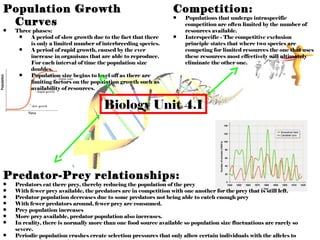Melden
Teilen

Empfohlen
Empfohlen
Weitere ähnliche Inhalte
Was ist angesagt?
Was ist angesagt? (20)
Andere mochten auch
Andere mochten auch (10)
GCE Sociology Revision (AQA)- Unit 1 Demography (4)

GCE Sociology Revision (AQA)- Unit 1 Demography (4)
Amino acid catabolism - Part-2 (Urea cycle and clinical significance)

Amino acid catabolism - Part-2 (Urea cycle and clinical significance)
Ähnlich wie Biology unit 4.1mindmaps
Ähnlich wie Biology unit 4.1mindmaps (20)
Human population, population issues, population growth curvue, factors contro...

Human population, population issues, population growth curvue, factors contro...
Gender and Livelihoods: Empirical Evidence: Gender relations and Household Fo...

Gender and Livelihoods: Empirical Evidence: Gender relations and Household Fo...
Food resources gateway 1 lesson 2 flipped classroom sec 4 express only

Food resources gateway 1 lesson 2 flipped classroom sec 4 express only
Mehr von andymartin
Mehr von andymartin (20)
Biology unit 4.1mindmaps
- 1. Population Growth Curves • Three phases: • A period of slow growth due to the fact that there is only a limited number of interbreeding species. • A period of rapid growth, caused by the ever increase in organisms that are able to reproduce. For each interval of time the population size doubles. • Population size begins to level off as there are limiting factors on the population growth such as availability of resources. Competition: • • Populations that undergo intraspecific competition are often limited by the number of resources available. Interspecific - The competitive exclusion principle states that where two species are competing for limited resources the one that uses these resources most effectively will ultimately eliminate the other one. Biology Unit 4.1 Predator-Prey relationships: • • • • • • • • Predators eat there prey, thereby reducing the population of the prey With fewer prey available, the predators are in competition with one another for the prey that is still left. Predator population decreases due to some predators not being able to catch enough prey With fewer predators around, fewer prey are consumed. Prey population increases More prey available, predator population also increases. In reality, there is normally more than one food source available so population size fluctuations are rarely so severe. Periodic population crashes create selection pressures that only allow certain individuals with the alleles to
- 2. Human population size and growth rate Factors affecting: • • • • • • There are two major factors that have caused an increase in the size of the human population: The development of agriculture. The development of manufacturing that created the industrial revolution. • It is the balance between the birth and death rate that ultimately determines whether or not the population is increasing, decreasing or remaining the same. Individual populations are affected by migration Immigration – joining a population from outside Emigration – leaving a population Biology Unit 4.1 Population growth: Population growth = (Births + immigration) – (deaths + emigration). % growth rate in a given period = population change during a period x 100 population at the start of a period Birth rate = number of births per year x 1000 Factors affecting Birth Rate: • • • • • Economic conditions – less developed countries tend to have higher birth rates Cultural/religious backgrounds – some countries/religions encourage larger families Social pressures – in some countries, a larger family improves social standing Birth control – the extent at which contraception/abortion is available affects birth rate Political factors – governments can influence